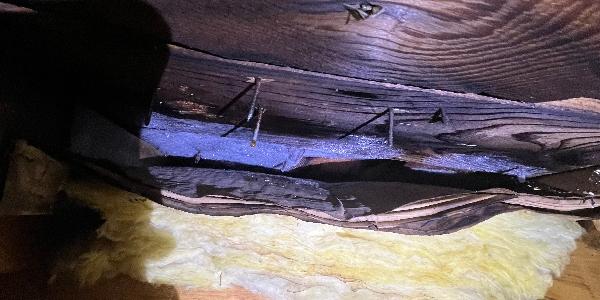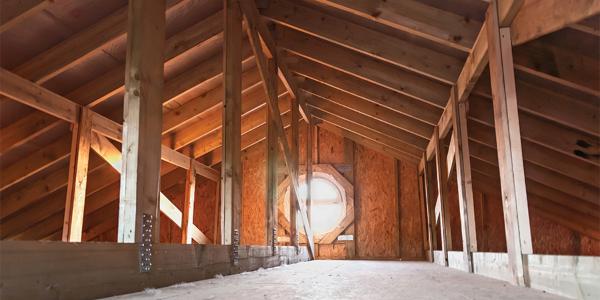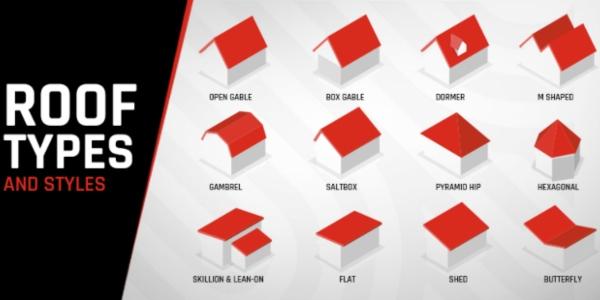A guide to roof materials that last
January 8, 2025 at 6:00 a.m.By HER Roofing.
The right roof does more than protect your home — it boosts its beauty, efficiency and value, making it one of your most important investments.
When was the last time you looked up and thought about the roof over your head? Whether you're building a dream home or replacing an aging roof, the materials you choose will influence everything from durability to curb appeal. With so many options on the market, from cost-effective asphalt shingles to eco-friendly green roofs, picking the right one can feel daunting. But don’t worry — we here at HER Roofing are ready to break it all down so you can make the best choice for your home and your budget. Keep reading to uncover which roofing material is right for you.
Every roofing material has its own set of advantages and disadvantages. Understanding these can aid in your selection process. For instance, asphalt shingles are popular due to their affordability and ease of installation for our roofers. However, they may not last as long as other options. Metal, while more expensive upfront, offers durability and energy efficiency.
Common roof types

By weighing these factors with our roofing contractors, home and business owners can better assess what works best for their needs.
How weather impacts your choice of roofing materials
Weather conditions in your region should play a significant role in your roofing material choice. For example, areas with heavy snowfall may benefit from roofs with a steep pitch and durable materials that can handle the weight. However, regions with high winds may require materials that are more resilient to that damage type. Understanding your local climate and its impact on roofs can help you select a material that provides lasting protection for your home.
Asphalt shingles versus metal roofing: Which is right for your home?
Asphalt shingles are often the go-to choice for many homeowners due to their lower cost and wide availability. They come in various colors and styles, making it easy to match your home’s aesthetic. However, they typically last 15 to 30 years and may need replacement sooner in harsh weather conditions.
Metal roofing can last 40 to 70 years, making it a more durable choice. It reflects heat, which can help reduce cooling costs in warmer climates. However, the upfront investment is significantly higher, which can be a barrier for some homeowners.
Ultimately, choosing between asphalt shingles and metal for your roof replacement will depend on your budget, location and personal preferences when it comes to regular roof maintenance.
There are eco-friendly roofing options available!
In today’s environmentally conscious world, many homeowners are seeking eco-friendly options. Materials like reclaimed wood, cedar shakes, bamboo and green roofs (which involve planting vegetation) are gaining popularity. These materials not only reduce environmental impact but can also enhance your home’s energy efficiency.
Benefits of eco-friendly roofing
-
Sustainability: Reduces reliance on non-renewable resources.
-
Energy Efficiency: Can lower heating and cooling costs.
-
Aesthetic Appeal: Unique and attractive designs can enhance curb appeal.
How to choose the best roofing material for your climate
The climate in your area plays a crucial role in determining the best roofing material for your home. In regions with heavy rainfall, materials like asphalt shingles and metal roofing can effectively shed water. For areas prone to wildfires, fire-resistant options like metal, slate or tile may be more appropriate.
However, homes in hot climates may benefit from reflective materials that reduce heat absorption. Understanding your local weather patterns and conditions is key to making an informed choice that protects your home effectively.
Matching the material to your home’s architectural style
The architectural style of your home can greatly influence your roofing material choice. For instance, traditional homes may look best with classic asphalt shingles or slate, while modern designs might benefit from sleek metal roofing.
-
Traditional homes: Asphalt shingles, slate or tile.
-
Modern homes: Metal or flat roofing options.
-
Mediterranean style: Clay tiles.
The impact of roofing materials on energy efficiency
Energy efficiency is a major consideration for homeowners today. Certain roofing materials can significantly affect your home’s energy consumption. For instance, reflective materials can lower cooling costs in hot climates, while well-insulated roofs can help retain heat in colder areas.
Additionally, materials like metal roofing often come with energy-efficient coatings that reflect sunlight, reducing heat absorption. Understanding the energy implications of different materials can lead to significant savings on utility bills over time.
A beginner’s guide to flat roofing
Flat roofing is often used in commercial properties but is gaining traction in residential settings, too. Materials like modified bitumen, TPO and EPDM are common choices. Each has its unique advantages, including durability and ease of installation.
TPO roofing
TPO or Thermoplastic Polyolefin, is a single-ply roofing material most commonly white and used for commercial or residential buildings. It’s well known for its ability to reflect heat, making it a great option if you want an energy-efficient option. This material also lasts between 20 and 30 years with minimal maintenance.
EPDM roofing
EPDM or Ethylene Propylene Diene Monomer, is a synthetic rubber that can be used for many things but is widely known and used for roofs. This is a low-cost, fire-resistant and eco-friendly option for both homes and commercial buildings.
Modified bitumen
Modified Bitumen roofing is a hybrid material that combines polymerized plastics or rubber with an asphalt membrane and then reinforced with fiberglass to create a flexible but sturdy roof. This method/style was created to be a better solution to the already existing built-up roofing systems.
When considering a flat roof, it’s important to ensure proper drainage to avoid water pooling, which can lead to leaks. Consulting with a professional roofing company, like HER Roofing, can provide insights into the best materials and installation practices for your specific needs.
Choosing the right roofing material for your roof replacement
Selecting the right roofing material is essential for property owners considering roof replacement. With many options available, from asphalt shingles and metal roofing to eco-friendly choices, it’s crucial to evaluate the benefits and drawbacks of each material. Factors such as climate, architectural style and energy efficiency should also guide your decision-making process. By understanding these elements, you can make an informed choice that not only enhances your home’s aesthetic appeal but also provides lasting protection and value.

Whether you prioritize durability, cost-effectiveness or environmental impact, knowing your options will help you achieve the best results for your commercial or residential roofing project.
Original article and photo source: HER Roofing
Learn more about HER Roofing in their Coffee Shop Directory or visit www.herroofing.com.











Comments
Leave a Reply
Have an account? Login to leave a comment!
Sign In